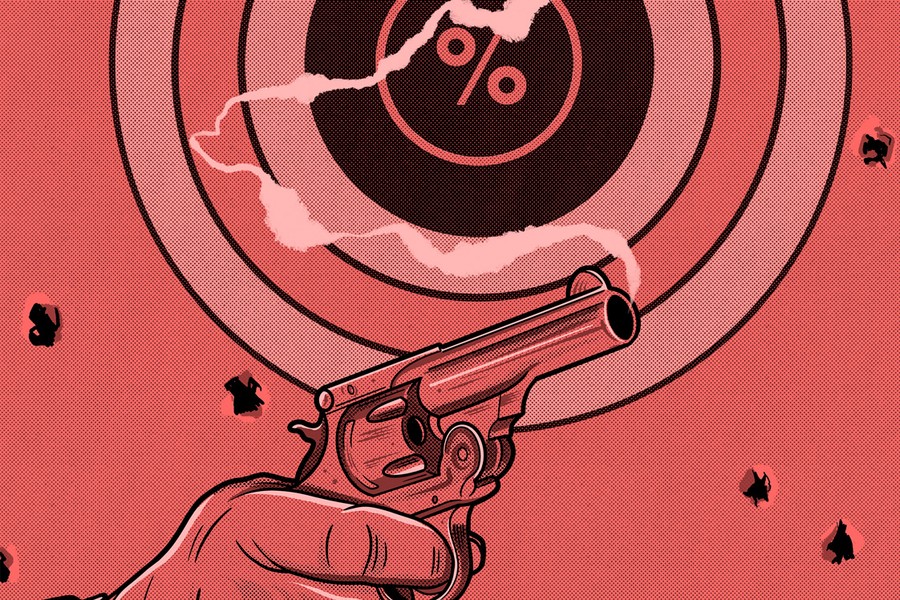The Attlee Government of the late 1940s practised a measure of austerity - they had little choice - but from the 1950s onwards the economy gradually did better but still did not make much dent in the debt. What did make a difference was inflation. Following the war it was regularly running up to 3% a year, which meant that the debt would be halved in 25 years. Then in the 1970s inflation really took off following the quadrupling of the price of oil in 1973. Indeed it touched around 20% for a couple of years but thanks to this inflation, debt fell below 40%.
Nor was this the only time. After the Napoleonic Wars in 1815 we also had debt of 250%. Britain industrialised in the Victorian era, but governments did not borrow much. With little or no inflation it took much longer to bring the ratio down below 40% - to the eve of the First World War in fact.
In current times, governments and central banks have focussed on keeping inflation dormant and with some success - though not as much perhaps as they think. While the price of goods has been subdued, asset prices have not. Houses, art, luxury goods, classic cars, the stock market - all have rocketed. Inflation by conventional indices may not be a problem but this lifestyle inflation is.
After the Napoleonic Wars in 1815 we also had debt of 250%
At the same time, services which used to be free to the public, have either been withdrawn or now cost. Central and local governments used to cover these through taxation, but no more. University student fees used to be free but now cost £7,000 per year. Car parking costs, especially with hospital visits, are extortionate, libraries have been closed, welfare benefits have been cut back, defined benefit pension schemes are largely gone in the private sector and governments now extract fees for essential services, which again used to be free, or virtually so. Much of this is blamed on austerity, but making people poorer is inflation too. It is just not measured as such.
University student fees used to be free but now cost £7,000 per year
Of course many analysts are still singing from the old hymn sheet talking about inflation in terms of food, energy, clothes, furniture and transport and seeing no sign of it - quite the opposite in fact.
Perhaps the most significant challenge to this consensus comes from Charles Goodhart, a former Bank of England man, now Emeritus Professor at the London School of Economics. Back in 2015 he wrote a paper - which was expanded into a book published in October this year with fellow economist Manjoy Pradhan - in which he said that inflation was largely caused by demographics.
Globalisation is stalling because of trade wars and the world is growing old, even in China where the one child policy means a whole swathe is reaching retirement.
The suppression of inflation from the late 1990s onwards was not primarily the result of central banks’ actions, as is witnessed by the same central banks’ failure to hit their target since 2008. Rather it was because China shifted millions of agricultural workers into manufacturing as part of its industrialisation in the 1990s, and the collapse of the Berlin Wall, which brought millions of skilled Eastern Europeans into the world economy for the first time. This doubled the labour supply of the industrial world.
The result was lower prices for Chinese exports, manufacturing relocating to China to take advantage of its lower wages and globalisation taking a hold. These factors caused the deflation.
But now the world is turning. Globalisation is stalling because of trade wars and the world is growing old, even in China where the one child policy means a whole swathe is reaching retirement. That means prices will go up. At the same time an increase in the elderly at the expense of those of working age, implies an increase in social care which is bad for the economy, as more care workers have to be hired and the public sector will have to raise taxes to pay for them. Those of working age with skills will have much greater bargaining power.
The pandemic has added to this. Governments have increased their deficits to make up for lost output and it is likely that this increase will not be reversed any time soon. All these factors will cause inflation.
Immigration is too toxic to change fundamental demographics, while countries like India and some in Africa and South America have the populations, but lack the institutions to deliver huge growth. They will of course develop but they will not be another China - and anyway according to the authors, we need three Chinas to make a difference.
Given they have not hit a target for 12 years, do you really want to bet on this?
In sum, says Goodhart, we are likely to see 4% to 5% inflation for the next 20 years, starting probably in about 2025, when Covid should be behind us and demographics really take hold. The central bank’s job will be to try to keep it at that level, so it does not explode to 20% or more, like in the 1970s. But given they have not hit a target for 12 years, do you really want to bet on this?
Author, broadcaster, journalist and lecturer, Anthony Hilton joined Fleet Street in 1968 as a trainee on The Guardian. He was City Editor of The Times (1981 to 1983), City Editor of The Evening Standard (1984 to 1989) and in 1989 became Managing Director of The Evening Standard. He held that post for six years before returning to the City Office as Editor in 1996. He has also worked for The Observer, The Daily Mail and The Sunday Express and for three years he was based in New York as Business Correspondent for the Sunday Times.
Illustration by Asa Taulbut




